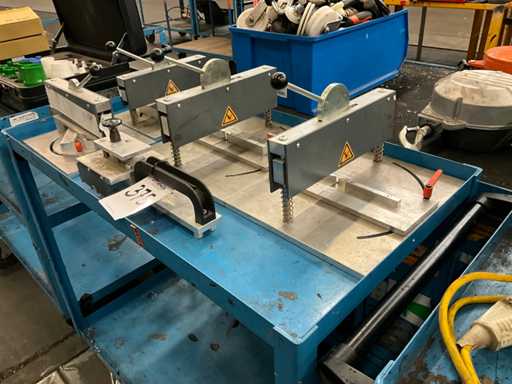Longitudinal and Lateral Slitting Lines
Efficient machines & plants for sheet metal working
Explanation of the term "longitudinal and lateral slitting lines"
A slitting line is a processing line in the metalworking industry, which cuts panels and bands into the desired form. Lateral slitting lines are used for panels, and longitudinal slitting lines are used for sheet metal that will be wrapped into coils. A machine that can conduct both tasks is called a longitudinal and lateral slitting line.
Assembly line in the metal industry
Cutting of panels and bands
Processes long and lateral workpieces
Quality Great offers Personalized
Composition of a longitudinal and lateral slitting line
A longitudinal and lateral slitting line is a complex assembly line that belongs to the vast majority of stations. The first section is a decoiler. This leads the sheet metal into the feed rollers. Longitudinal knives with fixed or mobile circular knives cut the band in the longitudinal direction, according to its length. Those with a lateral configuration cut the band in the lateral direction. A loop pit with a loop bridge can be used to even out the longitudinal difference between the individual strips. Band brakes and separation rings are used to ensure that the strips are properly wound around the coiler. Lateral slitting lines have a stacking device instead of a coiler.
Longitudinal and lateral slitting line in use
Working with a longitudinal and lateral slitting line
Given the complexity of a longitudinal and lateral slitting line, it is obvious that only thoroughly qualified personnel should operate it. This doesn't necessary mean that un-skilled workers cannot be hired to work with the machine; these workers just have to be trained accordingly. It is recommended that there is always a mixed team of experienced and non-experienced workers. Qualified industrial mechanics should always be available, in case there is big problem. A longitudinal and lateral slitting line requires a lot of maintenance. Badly maintained machines will incur long periods of stand still.
Buying a longitudinal and lateral slitting line
Before the installation of such a machine, particular components should be switched out if there is no maintenance document that accompanies the machine. This is particularly relevant for the bearings. It is recommended that all components of a longitudinal and lateral slitting line are bought from the same manufacturer, in order to ensure that all components fit each other.
Buying a longitudinal and lateral slitting line
When looking for a used machine, it is important to research buying individual components versus complete machines. Not every manufacturer of individual components also offers all the other necessary components for a longitudinal and lateral slitting line. It is not recommended to install components (e.g. decoiler) that are made by unknown brands. It is not necessary to switch out the whole machine, when just one component is defect. The installation and adjustment of the machine is more demanding, when all the components come from different places. Therefore, it is recommended to find a specialist for this task. Recommended suppliers of complete machines are SCHWABE, FORSTNER, SACMA, WILHELMSBURGER, KOHLER and UNGERER.

